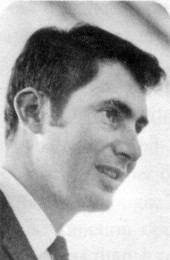- unknown (b.)
Bio/Description
A 1957 graduate of the University of Wyoming with a B.S. in Electical Engineering, he was names ?Outstanding Electrical Engineer? of his class. He received his Masters degree in Electrical Engineering from the University of California at Berkely. He joined Hewlett Packard in 1965 as a consultant with the responsibility for developing the architecture of the HP9100A. Prior to joining HP, he had designed data processing equipment, then formed Logic Design Company where he developed a floating point calculator upon with the Model 9100A is based. Hewlett-Packard called the 9100A a desktop calculator because, as Bill Hewlett said, "If we had called it a computer, it would have been rejected by our customers' computer gurus because it didn't look like an IBM. We therefore decided to call it a calculator, and all such nonsense disappeared." An engineering triumph at the time, the logic circuit was produced without any integrated circuits, the assembly of the CPU having been entirely executed in discrete components. With CRT readout, magnetic card storage, and printer, the price was around $5,000 ($33,000 today). The 9100A was the first scientific calculator by the modern definition (i.e. trig, log/ln, and exponential functions), and was the beginning of Hewlett-Packard's long history of using reverse Polish notation entry on their calculators.
-
Noted For:
Developer of the architecture for the HP9100A, an early computer -
Category of Achievement:
-
More Info:


